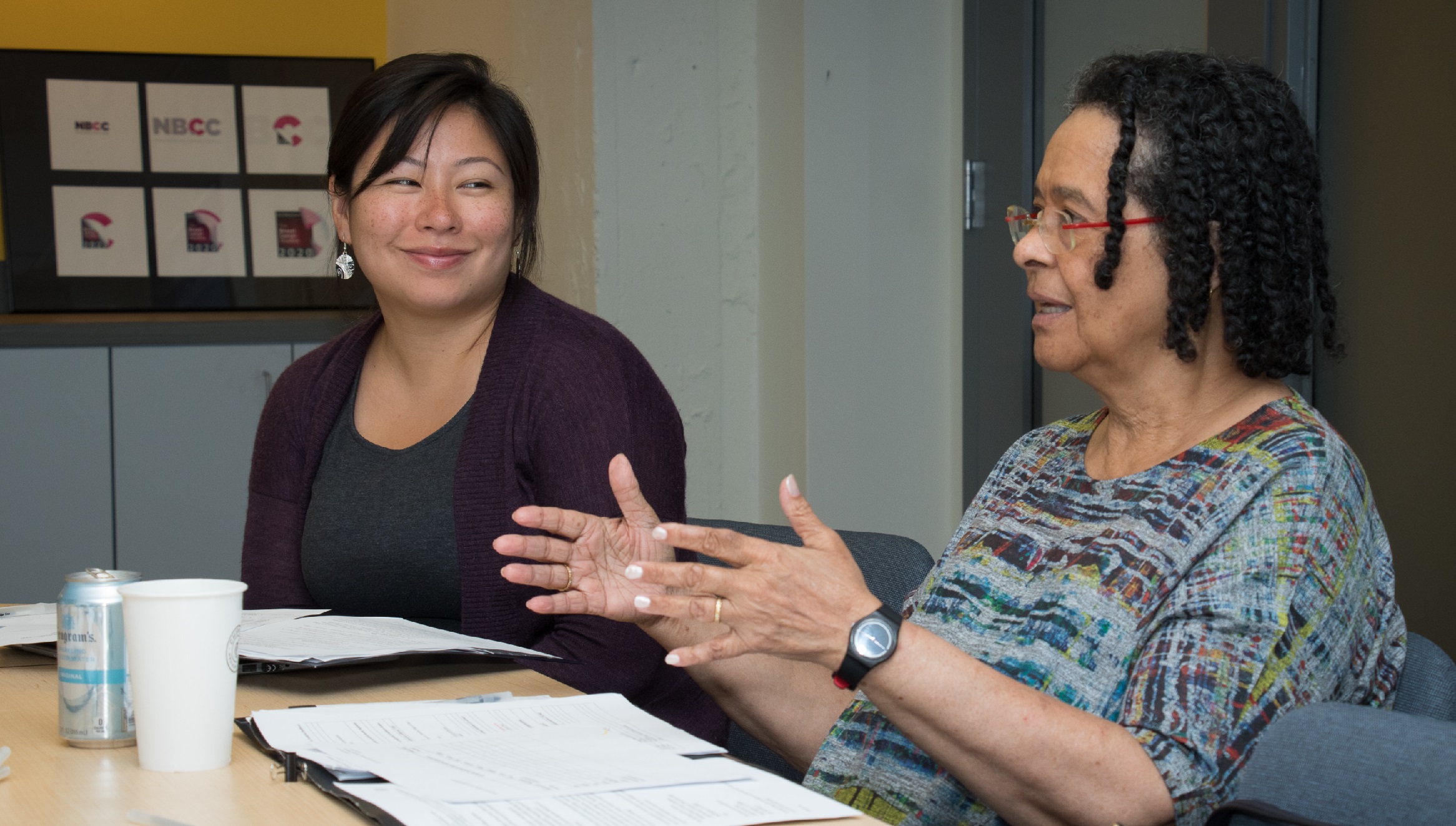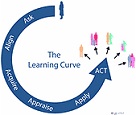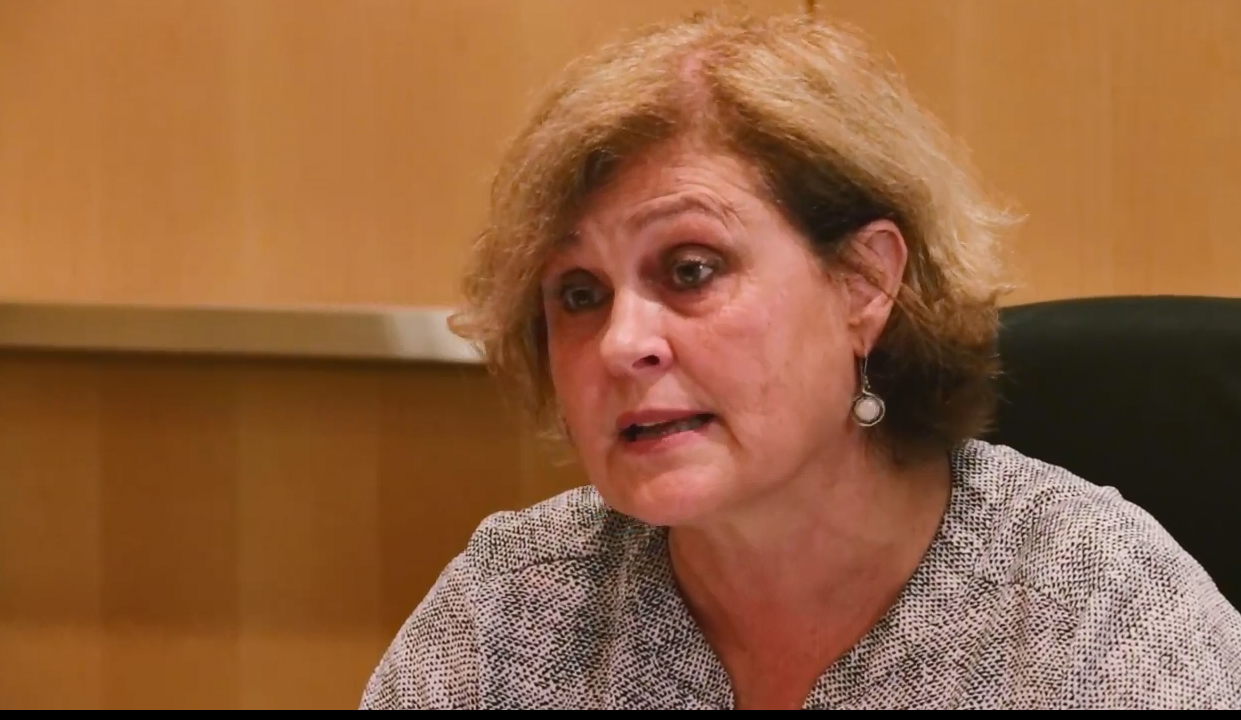
Directions: We recommend that interested stakeholders go through the following resources in the order they are presented. These resources have been organized to ensure that participants understand the fundamentals of evidence-based healthcare research before advancing to topics on why and how to meaningfully engage in research implementation.
Overview
1. Free Online Course: Understanding Evidence-based Healthcare: A Foundation for Action

This web course has been created by Cochrane United States as part of a project undertaken by Consumers United for Evidence-based Healthcare (CUE), and is designed to help consumer advocates understand the fundamentals of evidence-based healthcare concepts and skills.

This video explains the guidelines development process and the need for educated consumers to be involved in that process.
3. Series I: Introduction to participation on advisory panels
These are the first 6 videos in CUE's series of "short-shorts" about serving on advisory panels.
4. Series II: Case studies of consumer engagement on advisory panels
CUE has created a series of short videos or "case studies" for the purpose of informing health professionals/advisory panel organizers and patients/consumers about effective engagement and communication practices on advisory panels.
Videos for consumer representatives: Video 1: Building a bridge between consumers and health professionals & self-test 1 | Video 2: Understanding evidence-based healthcare as a consumer advocate & self-test 2 | Video 3: Strategies for contributing meaningfully to an advisory panel & self-test 3 | Video 4: How to communicate effectively on an advisory panel & self-test 4
Videos for health professionals/advisory panel organizers: Video 5: Why should advisory panels engage consumers to participate? & self-test 5 | Video 6:How to engage with consumers on advisory panels? & self-test 6 | Video 7: How to identify consumers as members of an advisory panel? & self-test 7 | Video 8: Preparing for consumer engagement on an advisory panel & self-test 8
4a. Pocket cards for consumers: Printable handouts with helpful hints (PDF)
This handout provides an organized summaries or "take home messages" from each case study presented.
4b. Pocket cards for health professionals: Printable handouts with helpful hints (PDF)
This handout provides an organized summaries or "take home messages" from each case study presented.
5. Series III: Scenarios exploring the interpersonal dynamics of advisory panel participation

CUE has created a series of short vignettes based on real experiences from professionals and patients participating on advisory panels.
1. Free Online Course: Understanding Evidence-based Healthcare: A Foundation for Action
This web course has been created by the United States Cochrane Center as part of a project undertaken by Consumers United for Evidence-based Healthcare (CUE), and is designed to help consumer advocates understand the fundamentals of evidence-based healthcare concepts and skills. Registration is open and free of charge. Participants are encouraged to finish the course in three months. We recommend that participants complete only 1-2 modules at a time. Participants must commit to filling out evaluation forms upon completion of each module.
2. Consumer Involvement in Guideline Development: Why and How to Participate
This video, written and recorded for CUE by Richard Rosenfeld, MD, MPH, explains the guidelines development process and the need for educated consumers to be involved in that process.
3. Series I: Introduction to participation on advisory panels
Serving on Advisory Panels: Patients/Consumers & other Stakeholders
These are the first 6 videos in CUE's series of "short-shorts" about serving on advisory panels. Feedback is welcome! CUE@jhu.edu
Video 1: When you are Asked to Serve on an Advisory Panel
Video 2. How to Successfully Contribute on an Advisory Panel
Video 3: How to Avoid Pitfalls When Serving on an Advisory Panel
Video 4: How a Chair Can Encourage Consumer Contribution
Video 5: The Value of Consumer Contribution on an Advisory Panel
Video 6: Resources for Consumer Contribution on an Advisory Panel
How to cite the videos from Series I:
Consumers United for Evidence-based Healthcare. "[Title of video]." Online video clip. YouTube.com. YouTube, 3 April 2015. Web. [Date accessed].
4. Series II: Case studies of consumer engagement on advisory panels
CUE has created a series of short videos or "case studies" for the purpose of informing health professionals/advisory panel organizers and patients/consumers about effective engagement and communication practices on advisory panels.
The case studies are broken up into two parts: Part one (videos 1-4) includes videos aimed at informing patient/consumer representatives interested in serving on advisory panels. Part two (videos 5-8) includes videos aimed at informing health professionals/advisory panel organizers about consumer engagement. Each video indicates the expected level of experience for the target audience. We define each level of experience as follows:
Novice: Viewer has never participated as/engaged with a consumer representative serving on an advisory panel
Moderate: Viewer has served on 1-2 advisory panels as or with a consumer representative
High: Viewer has served on 3 or more advisory panels as or with a consumer representative
Part 1: Patients/consumers serving on an advisory panel
Video 1: Building a bridge between consumers and health professionals: Serving on an advisory panel
Target audience: Consumer representatives
Experience level: Novice
Self test: What did you learn?
Video 2: Understanding evidence-based healthcare as a consumer advocate
Target audience: Consumer representatives
Experience level: Novice
Self-test: What did you learn?
Video 3: Strategies for contributing meaningfully to an advisory panel
Target audience: Consumer representatives
Experience level: Moderate
Self-test: What did you learn?
Video 4: How to communicate effectively on an advisory panel
Target audience: Consumer representatives
Experience level: High
Self-test: What did you learn?
Part 2: Professionals engaging consumers on an advisory panel
Video 5: Why should advisory panels engage consumers to participate?
Target audience: Health professionals/advisory panel organizers
Experience level: Novice
Self-test: What did you learn?
Video 6: How to engage with consumers on advisory panels?
Target audience: Health professionals/advisory panel organizers
Experience level: Moderate
Self-test: What did you learn?
Video 7: How to identify consumers as members of an advisory panel?
Target audience: Health professionals/advisory panel organizers
Experience level: Moderate
Self-test: What did you learn?
Video 8: Preparing for consumer engagement on an advisory panel
Target audience: Health professionals/advisory panel organizers
Experience level: High
Self-test: What did you learn?
How to cite the videos from Series II:
Consumers United for Evidence-based Healthcare. "[Title of video]." Online video clip. YouTube.com. YouTube, 12 October 2016. Web. [Date accessed].
4a. Pocket cards for consumers: Printable handouts with helpful hints
This handout provides an organized summaries or "take home messages" from each case study presented. The pocket card lists items to remember for consumer representatives participating on advisory panels. Consumer representatives can use these pocket cards as study material before serving on an advisory people or can even print it out and bring it with them to advisory panel meetings!
4b. Pocket cards for health professionals: Printable handouts with helpful hints
This handout provides an organized summaries or "take home messages" from each case study presented. The pocket card lists items to remember for health professionals/advisory panel organizers interested in engaging with consumer representatives in research implementation. Health professionals/advisory panel organizers can use these pocket cards as study material before serving on an advisory people or can even print it out and bring it with them to advisory panel meetings!
5. Series III: Scenarios exploring the interpersonal dynamics of advisory panel participation
CUE has created a series of short vignettes based on real experiences from professionals and patients participating on advisory panels. These videos portray real-life scenarios and situations likely to be encountered by professional guideline developers and consumer advocates as they collaborate on advisory panels. The scenarios depicted include preparing for the panel as a consumer, effectively moderating the panel as a Chair, and ensuring that diverse opinions are heard, understood, and respected.
Video 1: Preparing for serving on an advisory panel
Self-test: What did you learn?
Video 2: Moderating introductions on an advisory panel- as a Chair
Self-test: What did you learn?
Video 3: Getting your point across to a panel
Self-test: What did you learn?
Video 4: Treating panel members equally
Self-test: What did you learn?
Video 5: Avoiding jargon
Self-test: What did you learn?
Video 6: Acknowledging panel member diversity and contributions
Self-test: What did you learn?
Video 7: Using evidence to address patient concerns
Self-test: What did you learn?
Video 8: Setting an inclusive tone
Self-test: What did you learn?
How to cite the videos from Series III:
Consumers United for Evidence-based Healthcare. "[Title of video]." Online video clip. YouTube.com. YouTube, 7 February 2017. Web. [Date accessed].
